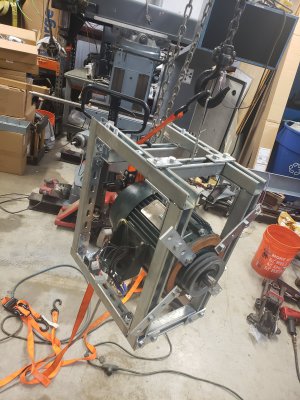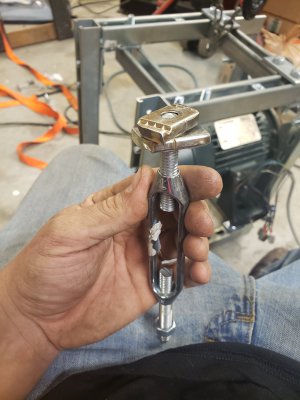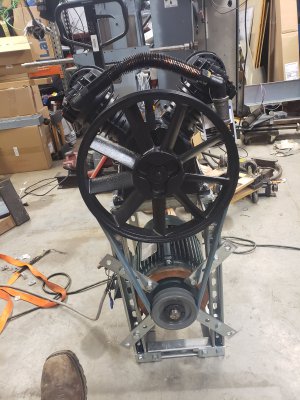- Joined
- Mar 26, 2018
- Messages
- 2,724
I'm planning multiple modes of operation and other goals in mind that I didn't get into at first because I didn't want the thread to get too far off the original question before I had a good understanding.
What has been discussed until now is what I would call start-up mode. Balls to the wall, as fast as the motor can go without self destruction, to attain max system pressure.
One that's happened, we enter "maintain pressure" mode. That's a PID loop where pressure is monitored by an analog sensor rather than a pressure switch with large hysteresis/headband. In this mode, if I connect a low volume air tool which causes tank pressure to drop by only say 5 PSI, the motor will come gradually to life, creeping along at just a few tens of RPM until max pressure is reacquired.
The reason for this, my other goal is noise reduction. My current oilless compressor is taking years off my life, always kicking on violently with no warning in a 90db banshee scream. With the new setup I know it's still going to be loud at startup, maybe even loaderbthan what I have now, but I can take the loud noise at startup because I'll be expecting it. I just turned the switch on, it's going to be loud; but once that's over, I don't have to worry that thing is going explode into action 90 minutes from now and make me spill coffee in my crotch.
If the noise is a main concern and your air needs are typically moderate, then an "Ultra Quiet" air compressor may be for you. I have two compressors chained together. A 5HP piston compressor has the big 30 gallon tank and turns on at 90 psi and off at 110. I added a HF 2HP ultra quiet compressor which turns on at 100 psi and off at 135. The output is pressure regulated to 110 psi. With them chained together, 98% of the time only the quiet one runs (60dBA) and uses the other compressor as a 30 gallon pony bottle. If I really use a ton of air the big one will kick on at 90dBA. I love the ultra quiet one - worth every penny.
Just have to be careful to never turn the output of the little compressor beyond 110 psi. The pressure relief valve on the big tank *should* protect it against that but better to not push it,




